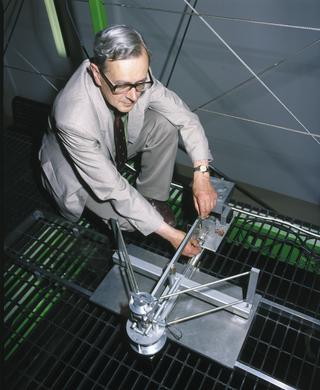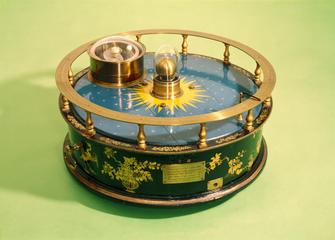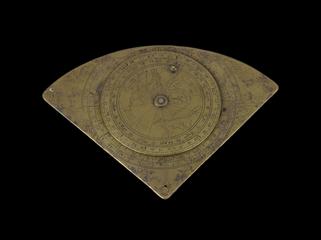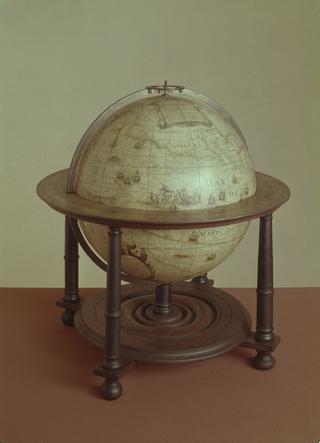

English brass Gunter quadrant, 17th century (4-1/2 inch radius) with degree scale and shadow square. Unsigned but design, lettering and decoration identical to 1938-386.
This unsigned English horary quadrant was made during the latter part of the seventeenth century. Made of brass the quadrant has engraved scales to a design conceived by the English mathematician Edmund Gunter in 1623. The horary quadrant was used for finding local time by sighting either the Sun or a bright star at night. Held vertically, a measurement could be taken from the position on the scale of a moveable bead on the thread of the instrument's plumb bob. The instrument was derived from the astrolabe and first appeared during the Medieval Period. Like its predecessor it includes a two-dimensional depiction of the heavens that is reduced to a quarter.
Details
- Category:
- Astronomy
- Object Number:
- 1889-51
- Materials:
- brass
- Measurements:
-
overall: 5 x 115 x 115 mm
- type:
- horary quadrant - gunter
- credit:
- Taylor, C.P.




